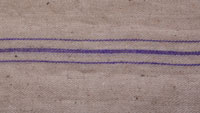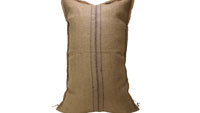Main menu:
Jute & Jute Products
Products

Jute has been used since ancient times in India. During the 19th and early 20th centuries jute was indispensable. It was used in making sacks, ropes, boot linings, aprons, carpets, tents, roofing felts, satchels, linoleum backing, tarpaulins, sand bags, electric cable, and even parachutes. Jute appealed to the people because of its strength, low cost, durability and versatility.During the British Raj, most of the raw jute fiber of Bengal was taken to the United Kingdom, where it was then processed in mills concentrated in Dundee. Margaret Donnelly, a jute mill owner in Dundee, set up the first jute mill in Bengal. In the years 1950s and 1960s, when nylon and polythene were rarely used, one of the primary sources of foreign exchange earnings was the jute products.It was also used in military during the British regime. Of late, Jute has entered diverse sectors of industry, where natural fibers are gradually turning better substitutes. Among these industries are paper, celluloid products (films), non-woven textiles, composites (pseudo-wood), and geotextiles. In December 2006 the General Assembly of the United Nations proclaimed 2009 to be the International Year of Natural Fibers, so as to raise the profile of jute and other natural fibers. Jute is a bio degradable crop grown mainly in the Ganges delta. It is one of the most important natural fibers after cotton in terms of cultivation and usage. Major parts of West Bengal and Bangladesh are involved in Jute cultivation. Countries like China, Thailand, Myanmar, Nepal and Bhutan also cultivate Jute.
The production of jute fabric has remained largely the same for centuries. In most cases, mature jute stalks are harvested by hand, and they are then defoliated. Jute fibers can be derived from both the inner stem and the outer skin of the stalk. A process called retting is used to remove the non-fibrous material from the stem and skin of the jute stalk. Retting softens the stalks and makes it possible to separate the fibrous material from the unusable material by hand. After the jute stalk has been retted, it is possible to separate the long, silky fibers and comb them into long strings. These combed fibers can then be spun into yarn. While it’s technically possible to make jute yarn with automated machines, most jute-producing communities still rely on analog spinning wheels for this process. Once jute fiber has been spun into yarn, it may be subjected to a variety of chemical processes to dye it, provide it with water resistance, or make it fire-resistant. Then, the finished reels of jute fiber are shipped out to textile production facilities to be woven into apparel or industrial textiles. In the case of jute apparel, a variety of softening techniques are used to make the finished apparel products more comfortable. Some manufacturers may agitate the jute yarn to reduce its roughness, or chemical techniques may be used to achieve the same effect. Jute fiber used for industrial purposes can generally be left in its original condition without using any softening techniques.

Yarn / Rope / Twine
High quality yarn is produced in the company’s Fine Yarn Unit. The various qualities of yarn & twine produced by the company are as follows:
- Yarn of count ranging from 4.8 lb to 120 lb
- Twisted yarn (1 ply to 7 ply)
- Precision wound yarn for the carpet industry
- Dyed yarn
- Yarn of CRM/CRT/CRX quality
- Twine
- Ropes
The company also manufactures yarn specific to requirement of the buyers in special terms.

Sacking Cloth
- Suitable to produce sacking bags for packing food grains and other commodities.
- Can be produced with or without colour stripes, as may be required.
- Packing is of 1000 yards in an iron bound bale but can be changed as needed.

Sacking Bags
A major chunk of the sacking production of the company is supplied to the Government of India, the various state agencies and agencies like the Food Corporation of India (FCI) and the like. This procurement is made on account of departmental buying for packing of food grains. The company also supplies sugar bags to the manufacturing sugar mills for packing of sugar. A brief description of the company's sacking portfolio is as under:
- Hydrocarbon Free (HCF) bags for food grain packing
- 50 kg B - Twill bags for food grain packing
- 100 kg A - Twill bags for sugar packing
- DW Flour bags for packing of wheat flour
- Special Bags as required
The company also offers branding facility for bags/sacks sourced by buyers and offers sacks in various construction and weight.
Home Page | Products | Services | Downloads | Enquiry | Shopping Cart | Contact Us | Blog | General Site Map










